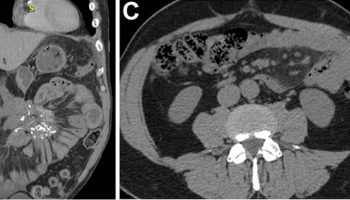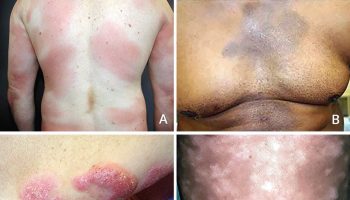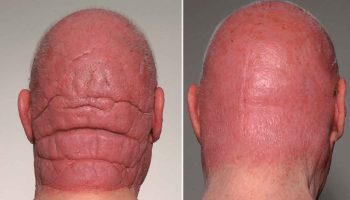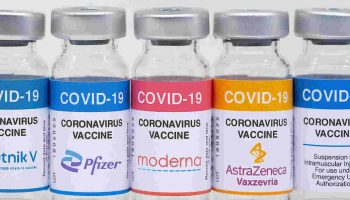What is tuberous sclerosis
Tuberous sclerosis, also known as tuberous sclerosis complex, is a rare genetic condition that causes mainly non-cancerous (benign) tumors to develop in different parts of the body. The tumors most often affect the brain, skin, kidneys, heart, eyes and lungs. The severity of these problems can vary significantly, and some tumors cause no noticeable problems. Tuberous sclerosis complex (tuberous sclerosis) usually affects the central nervous system and results in a combination of symptoms including seizures, developmental delay, behavioral problems, skin abnormalities, and kidney disease. Kidney tumors are common in people with tuberous sclerosis complex; these growths can cause severe problems with kidney function and may be life-threatening in some cases. Additionally, tumors can develop in the heart, lungs, and the light-sensitive tissue at the back of the eye (the retina).
Tuberous sclerosis is present from birth, although it may not cause obvious problems immediately. It can take time for the symptoms to develop. The disease can be mild, or it can cause severe disabilities. In rare cases, tumors in vital organs or other symptoms can be life-threatening.
Tuberous sclerosis affects as many as 25,000 to 40,000 individuals in the United States and about 1 to 2 million individuals worldwide, with an estimated prevalence of one in 6,000 newborns. tuberous sclerosis occurs in all races and ethnic groups, and in both genders.
The name tuberous sclerosis comes from the characteristic tuber or potato-like nodules in the brain, which calcify with age and become hard or sclerotic. The disorder–once known as epiloia or Bourneville’s disease–was first identified by a French physician more than 100 years ago 1.
Many tuberous sclerosis patients show evidence of the disorder in the first year of life. However, clinical features can be subtle initially, and many signs and symptoms take years to develop. As a result, tuberous sclerosis can be unrecognized or misdiagnosed for years.
Tuberous sclerosis has no cure, but treatments can help symptoms. Options include medicines, educational and occupational therapy, surgery, or surgery to treat specific complications.
Is tuberous sclerosis inherited?
Tuberous sclerosis is caused by changes (mutations) in either the TSC1 or TSC2 gene. These genes are involved in regulating cell growth, and the mutations lead to uncontrolled growth and multiple tumors throughout the body.
In around 2 in every 3 cases, the genetic fault occurs for no apparent reason (sporadic cases) in people without any other affected family members.
In the remaining 1 in 3 cases, the fault is passed on to a child by their parents. Only one parent needs to carry the faulty gene to pass it on, and a parent who has one of the faulty genes has a 1 in 2 chance of passing it on to each child they have.
The parent carrying the faulty gene will also have tuberous sclerosis, although sometimes it may be so mild they do not realize.
In familial cases, tuberous sclerosis is an autosomal dominant disorder, which means that the disorder can be transmitted directly from parent to child. In those cases, only one parent needs to have the faulty gene in order to pass it on to a child. If a parent has tuberous sclerosis, each offspring has a 50 percent chance of developing the disorder. Children who inherit tuberous sclerosis may not have the same symptoms as their parent and they may have either a milder or a more severe form of the disorder.
Rarely, individuals acquire tuberous sclerosis through a process called gonadal mosaicism. These patients have parents with no apparent defects in the two genes that cause the disorder. Yet these parents can have a child with tuberous sclerosis because a portion of one of the parent’s reproductive cells (sperm or eggs) can contain the genetic mutation without the other cells of the body being involved. In cases of gonadal mosaicism, genetic testing of a blood sample might not reveal the potential for passing the disease to offspring.
Tuberous sclerosis life expectancy
The outlook for individuals with tuberous sclerosis is highly variable and depends on the severity of symptoms. Those individuals with mild symptoms usually do well and have a normal life expectancy, while paying attention to tuberous sclerosis-specific issues. Individuals who are severely affected can suffer from severe mental retardation and persistent epilepsy.
All individuals with tuberous sclerosis are at risk for life-threatening conditions related to the brain tumors, kidney lesions, or lymphangioleiomyomatosis (LAM). Continued monitoring by a physician experienced with tuberous sclerosis is important. With appropriate medical care, most individuals with the disorder can look forward to normal life expectancy.
Tuberous sclerosis symptoms
Tuberous sclerosis can affect many different systems of the body, causing a variety of signs and symptoms. Signs of the disorder vary depending on which system and which organs are involved. The natural course of tuberous sclerosis varies from individual to individual, with symptoms ranging from very mild to quite severe. In addition to the benign tumors that frequently occur in tuberous sclerosis, other common symptoms include seizures, cognitive impairment, behavior problems, and skin abnormalities. Tumors can grow in nearly any organ, but they most commonly occur in the brain, kidneys, heart, lungs, and skin. Malignant tumors are rare in tuberous sclerosis. Those that do occur primarily affect the kidneys.
Virtually all affected people have skin abnormalities, including patches of unusually light-colored skin, areas of raised and thickened skin, and growths under the nails. Tumors on the face called facial angiofibromas are also common beginning in childhood.
Symptoms vary, depending on where the tumors grow. They could include
- Skin problems, such as light patches and thickened skin
- Seizures
- Behavior problems
- Intellectual disabilities
- Kidney problems
Kidney problems such as cysts and angiomyolipomas occur in an estimated 70 to 80 percent of individuals with tuberous sclerosis, usually occurring between ages 15 and 30. Cysts are usually small, appear in limited numbers, and cause no serious problems. Approximately 2 percent of individuals with tuberous sclerosis develop large numbers of cysts in a pattern similar to polycystic kidney disease2 during childhood. In these cases, kidney function is compromised and kidney failure occurs. In rare instances, the cysts may bleed, leading to blood loss and anemia.
Angiomyolipomas-benign growths consisting of fatty tissue and muscle cells-are the most common kidney lesions in tuberous sclerosis. These growths are seen in the majority ofindividuals with tuberous sclerosis, but are also found in about one of every 300 people without tuberous sclerosis. Angiomyolipomas caused by tuberous sclerosis are usually found in both kidneys and in most cases they produce no symptoms. However, they can sometimes grow so large that they cause pain or kidney failure. Bleeding from angiomyolipomas may also occur, causing both pain and weakness. If severe bleeding does not stop naturally, there may severe blood loss, resulting in profound anemia and a life-threatening drop in blood pressure, warranting urgent medical attention.
Other rare kidney problems include renal cell carcinoma, developing from an angiomyolipoma, and oncocytomas, benign tumors unique to individuals with tuberous sclerosis.
Tumors called cardiac rhabdomyomas are often found in the hearts of infants and young children with tuberous sclerosis, and they are often seen on prenatal fetus ultrasound exams. If the tumors are large or there are multiple tumors, they can block circulation and cause death. However, if they do not cause problems at birth-when in most cases they are at their largest size-they usually become smaller with time and do not affect the individual in later life.
Benign tumors called phakomas are sometimes found in the eyes of individuals with tuberous sclerosis, appearing as white patches on the retina. Generally they do not cause vision loss or other vision problems, but they can be used to help diagnose the disease.
Additional tumors and cysts may be found in other areas of the body, including the liver, lung, and pancreas. Bone cysts, rectal polyps, gum fibromas, and dental pits may also occur.
A wide variety of skin abnormalities may occur in individuals with tuberous sclerosis. Most cause no problems but are helpful in diagnosis. Some cases may cause disfigurement, necessitating treatment. The most common skin abnormalities include:
- Hypomelanic macules (“ash leaf spots”), which are white or lighter patches of skin that may appear anywhere on the body and are caused by a lack of skin pigment or melanin-the substance that gives skin its color.
- Reddish spots or bumps called facial angiofibromas (also called adenoma sebaceum), which appear on the face (sometimes resembling acne) and consist of blood vessels and fibrous tissue.
- Raised, discolored areas on the forehead called forehead plaques, which are common and unique to tuberous sclerosis and may help doctors diagnose the disorder.
- Areas of thick leathery, pebbly skin called shagreen patches, usually found on the lower back or nape of the neck.
- Small fleshy tumors called ungual orsubungual fibromas that grow around and under the toenails or fingernails and may need to be surgically removed if they enlarge or cause bleeding. These usually appear later in life, ages 20 – 50.
- Other skin features that are not unique to individuals with tuberous sclerosis, including molluscum fibrosum or skin tags, which typically occur across the back of the neck and shoulders, café au lait spots or flat brown marks, and poliosis, a tuft or patch of white hair that may appear on the scalp or eyelids.
Lung lesions are present in about one-third of adult women with tuberous sclerosis and are much less commonly seen in men. Lung lesions include lymphangioleiomyomatosis and multinodular multifocal pneumocyte hyperplasia. Lymphangioleiomyomatosis is a tumor-like disorder in which cells proliferate in the lungs, and there is lung destruction with cyst formation There is a range of symptoms with lymphangioleiomyomatosis, with many tuberous sclerosis individuals having no symptoms, while others suffer with breathlessness, which can progress and be severe. Multinodular multifocal pneumocyte hyperplasia is a more benign tumor that occurs in men and women equally.
Tuberous sclerosis brain
Tuberous sclerosis complex often affects the brain, causing seizures, behavioral problems such as hyperactivity and aggression, and intellectual disability or learning problems. Some affected children have the characteristic features of autism, a developmental disorder that affects communication and social interaction. Benign brain tumors can also develop in people with tuberous sclerosis complex; these tumors can cause serious or life-threatening complications.
Three types of brain lesions are seen in tuberous sclerosis:
- Cortical tubers, for which the disease is named, generally form on the surface of the brain but may also appear in the deep areas of the brain;
- Subependymal nodules (SEN), which form in the walls of the ventricles–the fluid-filled cavities of the brain;
- Subependymal giant-call astrocytomas (SEGA), which develop from subependymal nodules (SEN) and grow such that they may block the flow of fluid within the brain, causing a buildup of fluid and pressure and leading to headaches and blurred vision.
Tuberous sclerosis usually causes the greatest problems for those affected and their family members through effects on brain function. Most individuals with tuberous sclerosis will have seizures at some point during their life. Seizures of all types may occur, including infantile spasms; tonic-clonic seizures (also known as grand mal seizures); or tonic, akinetic, atypical absence, myoclonic, complex partial or generalized squires. Infantile spasms can occur as soon as the day of birth and are often difficult to recognize. Seizures can also be difficult to control by medication,and sometimes surgery or other measures are used.
About one-half to two-thirds of individuals with tuberous sclerosis have developmental delays ranging from mild learning disabilities to severe impairment. Behavior problems, including aggression, sudden rage, attention deficit hyperactivity disorder, acting out, obsessive-compulsive disorder, and repetitive, destructive, or self-harming behavior occur in children with tuberous sclerosis and can be difficult to manage. About one-third of children with tuberous sclerosis meet criteria for autism spectrum disorder.
What problems can tuberous sclerosis cause?
The tumors caused by tuberous sclerosis can result in a range of associated health problems, including:
- epilepsy – a condition that causes seizures (fits)
- learning disabilities
- behavioral problems – such as hyperactivity or an autistic spectrum disorder
- skin abnormalities – such as patches of light-coloured or thickened skin, or red acne-like spots on the face
- the kidneys not working properly
- breathing difficulties
- a build-up of fluid on the brain (hydrocephalus)
These problems can range from mild to severe, and it’s possible to have only a few of these problems or a wide range. Members of the same family may be affected very differently by tuberous sclerosis.
Problems affecting the brain
Tumors that develop in the brain can cause a range of problems.
Epilepsy and spasms
Most people with tuberous sclerosis will have epilepsy and experience repeated seizures (fits).
Some young children experience a more serious condition, known as infantile spasms, where they have lots of seizures over a short space of time and brain activity is abnormal all the time. These usually develop during the first year of life.
Infantile spasms tend to disappear as a child gets older but, by then, they may have led to some degree of permanent brain damage, which can cause problems such as moderate to severe intellectual disability, epilepsy that does not respond to medication, and autism.
It’s important for infantile spasms to be identified as early as possible, as early treatment markedly reduces the risk of brain damage.
Learning disabilities
Nearly half of all children with tuberous sclerosis will have a learning disability, which can range from mild to severe.
Possible problems include:
- poor memory
- poor attention span
- difficulty making plans or organizing activities
- learning much more slowly than other people
- in severe cases, being unable to communicate or look after themselves
Behavioral and developmental disorders
Behavioral and developmental disorders are more common in children with tuberous sclerosis, particularly those with learning disabilities.
These problems can include:
- autism spectrum disorder – a condition that affects social interaction, communication, interests and behavior
- hyperactivity and impulsive behavior
- aggression and self-harm
- anxiety
- extreme shyness
- depression
- sleep disorders – such as finding it difficult to get to sleep or frequently waking up during the night
Hydrocephalus
A small number of people with tuberous sclerosis develop large brain tumors that grow big enough to obstruct the flow of cerebrospinal fluid (CSF) through the brain.
If the flow of cerebrospinal fluid (CSF) is blocked, it can cause pressure to build in the brain. This is called hydrocephalus. Symptoms can include:
- headaches
- neck pain
- feeling and being sick
- increasing drowsiness
- changes in your mental state, such as confusion
- blurred vision, double vision or loss of vision
- difficulty walking
- a sudden change in bladder or bowel control, such as urinary incontinence
- worsening epilepsy or challenging behavior
Brain tumors can be detected through regular brain scans and treated before they cause hydrocephalus.
If hydrocephalus develops, emergency surgery is required to drain away excess fluid from the brain. If left untreated, it can cause brain damage or, in the most serious cases, death.
Skin problems
Most people with tuberous sclerosis will have abnormal growths or patches on their skin. They usually first develop during early childhood and can include:
- patches of light-colored skin
- red, acne-like spots and blemishes on the face
- areas of thickened skin
- growths of skin under or around the nails
Kidney problems
Most people with tuberous sclerosis will have multiple growths in their kidneys, including tumors and cysts (small fluid-filled sacs).
These do not always cause problems but can lead to:
- internal bleeding – this can cause blood in pee and sudden, severe pain in the tummy
- high blood pressure (hypertension)
- kidney failure, which can cause symptoms such as weight loss, swollen ankles, feet or hands, shortness of breath, an increased need to pee and itchy skin
- in rare cases, kidney cancer
Heart tumors
Many children born with tuberous sclerosis will develop one or more tumors inside their heart.
These tumors are usually very small and do not cause any symptoms. Most heart tumors will shrink as a child gets older.
However, in a small number of cases, the tumors can cause problems such as an irregular heart beat (arrhythmia) or heart failure.
Eye tumors
Most people with tuberous sclerosis will develop one or more tumors inside their eyes.
These tumors grow on the surface of the retina, which is the thin layer of nerve cells that line the inside of the back of the eye.
However, these tumors rarely grow large enough to affect a person’s vision.
Lung tumors
At least 1 in every 3 women with tuberous sclerosis will develop tumors and cysts inside their lungs, usually between the ages of 20 and 40. It’s unclear why women are commonly affected and men rarely are.
In many cases, these cysts and tumors do not cause a problem.
However, some women experience breathing difficulties similar to chronic obstructive pulmonary disease (COPD) and occasionally the tumors can rupture, causing a serious problem where air leaks out of the lungs and into the surrounding area.
Tuberous sclerosis causes
Tuberous sclerosis is caused by defects, or mutations, on two genes, TSC1 and TSC2. Only one of the genes needs to be affected for tuberous sclerosis to be present. The TSC1 gene, discovered in 1997, is on chromosome 9 and produces a protein called hamartin. The TSC2 gene, discovered in 1993, is on chromosome 16 and produces the protein tuberin. Scientists believe these proteins act in a complex as growth suppressors by inhibiting the activation of a master, evolutionarily conserved kinase called mTOR. Loss of regulation of mTOR occurs in cells lacking either hamartin or tuberin, and this leads to abnormal differentiation and development, and to the generation of enlarged cells, as are seen in tuberous sclerosis brain lesions.
People with tuberous sclerosis complex are born with one mutated copy of the TSC1 or TSC2 gene in each cell. This mutation prevents the cell from making functional hamartin or tuberin from the altered copy of the gene. However, enough protein is usually produced from the other, normal copy of the gene to regulate cell growth effectively. For some types of tumors to develop, a second mutation involving the other copy of the TSC1 or TSC2 gene must occur in certain cells during a person’s lifetime.
When both copies of the TSC1 gene are mutated in a particular cell, that cell cannot produce any functional hamartin; cells with two altered copies of the TSC2 gene are unable to produce any functional tuberin. The loss of these proteins allows the cell to grow and divide in an uncontrolled way to form a tumor. In people with tuberous sclerosis complex, a second TSC1 or TSC2 mutation typically occurs in multiple cells over an affected person’s lifetime. The loss of hamartin or tuberin in different types of cells leads to the growth of tumors in many different organs and tissues.
Inheritance Pattern
Tuberous sclerosis complex has an autosomal dominant pattern of inheritance, which means one copy of the altered gene in each cell is sufficient to increase the risk of developing tumors and other problems with development. In about one-third of cases, an affected person inherits an altered TSC1 or TSC2 gene from a parent who has the disorder. The remaining two-thirds of people with tuberous sclerosis complex are born with new mutations in the TSC1 or TSC2 gene. These cases, which are described as sporadic, occur in people with no history of tuberous sclerosis complex in their family. TSC1 mutations appear to be more common in familial cases of tuberous sclerosis complex, while mutations in the TSC2 gene occur more frequently in sporadic cases.
Tuberous sclerosis diagnosis
To diagnose tuberous sclerosis, you’ll be asked about your family’s medical history. You’ll also have a number of tests to look for signs of the condition.
Healthcare professionals use a checklist of the characteristic features of tuberous sclerosis – such as abnormal areas of skin, or tumors in your eyes, brain, heart, lungs or kidneys – to confirm a diagnosis. Several tests will be needed to check for these features.
Finding out about your family’s medical history is also important because tuberous sclerosis can sometimes run in families.
The diagnosis of tuberous sclerosis is based upon clinical criteria. In many cases the first clue to recognizing tuberous sclerosis is the presence of seizures or delayed development. In other cases, the first sign may be white patches on the skin (hypomelanotic macules) or the identification of cardiac tumor rhabdomyoma.
Diagnosis of the disorder is based on a careful clinical exam in combination with computed tomography (CT) or magnetic resonance imaging (MRI) of the brain, which may show tubers in the brain, and an ultrasound of the heart, liver, and kidneys, which may show tumors in those organs. Doctors should carefully examine the skin for the wide variety of skin features, the fingernails and toenails for ungual fibromas, the teeth and gums for dental pits and/or gum fibromas, and the eyes for retinal lesions. A Wood’s lamp or ultraviolet light may be used to locate the hypomelantic macules which are sometimes hard to see on infants and individuals with pale or fair skin. Because of the wide variety of signs of tuberous sclerosis, it is best if a doctor experienced in the diagnosis of tuberous sclerosis evaluates a potential patient.
In infants tuberous sclerosis may be suspected if the child has cardiac rhabdomyomas or seizures (infantile spasms) at birth. With a careful examination of the skin and brain, it may be possible to diagnose tuberous sclerosis in a very young infant. However, many children are not diagnosed until later in life when their seizures begin and other symptoms such as facial angiofibromas appear.
Tests for tuberous sclerosis
Tests you may have to check for tuberous sclerosis include:
- an eye examination – to check for eye tumors
- a skin examination – to look for abnormal growths or patches of pale or thickened skin
- an MRI scan – to detect tumors in the brain or kidneys
- a CT scan or ultrasound scan – to detect tumors in the kidneys, heart or lungs
- an electroencephalogram (EEG) – to detect abnormal electrical activity within the brain associated with epilepsy
- an electrocardiogram (ECG) – to detect abnormal electrical activity in the heart that could be caused by heart tumors
A genetic blood test to look for the faulty genes that cause tuberous sclerosis can also help make a diagnosis, although it isn’t always reliable.
Tuberous sclerosis treatment
There is no cure for tuberous sclerosis and tuberous sclerosis is a lifelong condition that requires long-term care and support from a range of different healthcare professionals.
If your child is affected, an individual care plan will be drawn up to address any needs or problems they have. As your child gets older, the plan will be reassessed to accommodate changes to their needs or situation.
Their care plan is likely to include details about any treatment or support they need, as well as the routine tests that will be necessary to monitor their condition.
Monitoring the condition
Regular testing is important for people with tuberous sclerosis. This is so the function of the organs often affected by the condition – such as the brain, kidneys and lungs – can be regularly monitored and assessed.
Tests and checks that may be recommended include:
- MRI scans – to check for changes in tumors in the brain or kidneys
- ultrasound scans – to check for heart and kidney tumors
- blood tests – to check how well the kidneys are working and other things, such as vitamin D levels
- electrocardiograms (ECGs) – to detect abnormal electrical activity in the heart
- CT scans – to check the function of the lungs, such as measuring how much air a person can breathe out
- skin and eye examinations – to look for any changes
- blood pressure measurements
- questions about your child’s behavior and development
How often these tests are needed will depend on your or your child’s age and the symptoms they have. Some are carried out annually, while others are done once every few years.
Epilepsy
Epilepsy is a very common feature of tuberous sclerosis and can sometimes be difficult to control.
Medications to control the seizures (anti-epileptic drugs) will usually be tried first, although they’re not always effective for people with tuberous sclerosis. Vigabatrin is a particularly useful medication in tuberous sclerosis, and has been approved by the U.S. Food and Drug Administration (FDA) for treatment of infantile spams in tuberous sclerosis, although it has significant side effects.
If the first medicine isn’t effective, the dose can be increased. You can also try a different medicine, or you may be prescribed two medicines to take at once.
If medication doesn’t control the seizures, one of the following procedures may be recommended:
- surgery to remove any tumors in your brain that may be causing the seizures
- vagus nerve stimulation (VNS) – where a small electrical device is implanted under the skin to send pulses of electricity to the brain
- a special diet – the ketogenic diet or a modified version of it
Behavioral and learning problems
If your child is experiencing behavioral problems or has a learning disability, they may be referred to a psychologist for an assessment.
A special educational needs plan may be drawn up to outline any extra educational support your child may require.
For some children, it may be possible for extra support to be given at a mainstream school, while others may benefit from attending a special school.
Brain tumors
Any brain tumors will be detected and monitored closely so treatment can be carried out if necessary.
A brain tumor may need to be surgically removed if there’s a risk it could get too big and cause a build-up of fluid on the brain (hydrocephalus).
Research has also found that a medication called everolimus (Afinitor®) shrinks most brain tumors, preventing them from causing hydrocephalus and potentially improving epilepsy as well. The FDA has approved the drug everolimus (Afinitor®) to treat subependymal giant cell astrocytomas (SEGA brain tumors) and angiomyolipoma kidney tumors.
Everolimus (Afinitor®) is a type of mTOR inhibitor, which interrupts or blocks the chemical reactions needed for tumors to grow. They are a useful treatment for some of the problems caused by tuberous sclerosis.
Long-term studies carried out over several years have shown them to be very effective and longer-term studies are under way.
Skin problems
Abnormal growths or patches of skin don’t usually present a serious health problem, but their appearance can affect a person’s confidence and self-esteem.
Laser therapy can be used to improve the appearance of the skin if necessary. If the growths or patches return, repeated laser therapy may be required. Using sun cream is also important to protect the skin.
Research has shown the effectiveness of mTOR inhibitor cream in treating skin abnormalities caused by tuberous sclerosis. The rash also usually shows significant improvement in those taking mTOR inhibitors as tablets for their kidneys or brain tumors.
Kidney tumors
Treatment for kidney tumors and growths will depend on the problems they cause.
For example, if kidney tumors cause high blood pressure (hypertension), medicine can be used to help lower it. Read more about treating high blood pressure.
Everolimus may be used to stop tumors becoming too large, as large tumors can cause dangerous bleeding. However, as this is a relatively new treatment, the long-term effects are not yet fully known.
If a tumor bleeds, a procedure called embolization may be recommended. A special substance is injected into the tumor to block its blood supply, which starves it of oxygen and nutrients, causing it to shrink.
Very rarely, if you have a severe or total loss of kidney function, you may require dialysis or a kidney transplant.
Heart tumors
In most cases, heart tumors will not need treatment. Heart tumors in babies usually shrink as the child gets older, until they are barely detectable as adults.
However, in some rare cases, surgery may be required to remove the tumors if they begin to seriously affect the functioning of the heart.
Sometimes, the heart tumors affect the electrical conduction on the heart and cause abnormal heart rhythms. These problems occasionally need treatment with medication.
Lung tumors
Women with lung tumors may require medication to shrink the tumors.
Research has shown that an mTOR inhibitor called sirolimus is effective, although it can cause side effects such as feeling sick, and constipation or diarrhea. It’s available to treat lung tumors caused by tuberous sclerosis through the National LAM Centre at the University Hospital of Nottingham, UK.
If lung tumors lead to a collapsed lung, emergency surgery is required to repair the lung and drain any air that has escaped into the chest.
In very severe cases, a lung transplant may be required.
Eye tumors
Eye tumors rarely need any treatment, because they usually do not grow big enough to impair vision. In rare cases where vision is affected, a technique called photocoagulation can be used.
Photocoagulation is a type of surgery that uses lasers to burn away the blood vessels supplying the eye tumors with blood. Blocking the blood supply should shrink the tumors.
- Tuberous Sclerosis Fact Sheet. https://www.ninds.nih.gov/Disorders/Patient-Caregiver-Education/Fact-Sheets/Tuberous-Sclerosis-Fact-Sheet[↩]





